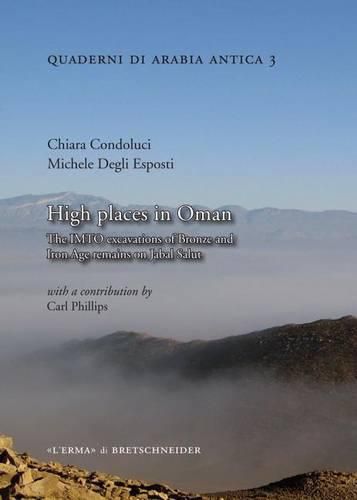Readings Newsletter
Become a Readings Member to make your shopping experience even easier.
Sign in or sign up for free!
You’re not far away from qualifying for FREE standard shipping within Australia
You’ve qualified for FREE standard shipping within Australia
The cart is loading…






This book presents the results of two field seasons that the Italian Mission to Oman spent excavating a few tombs located on top of Jabal Salut in Central Oman. A cluster of these tombs was later razed and replaced by a small, rectangular pillared shrine built in stone and mortar that represents a unicum for the whole South East Arabia. The funerary monuments can be dated to the third and second millennium BC (Early to Middle Bronze Age), with evidence for reuse during the first millennium BC (local Iron Age). The small shrine is also datable to the Iron Age. In addition to architectural details, the excavations produced an abundance of pottery and soft stone vessels, which provide important dating information and enable the use of the tombs to be considered alongside evidence obtained from the excavation of nearby Bronze Age and Iron Age settlements. As well as showing the results from the excavations and placing them in a local context, it will be discussed how typical the results obtained from Jabal Salut might be for the rest of South East Arabia. In particular, it is tempting to consider what importance the region’s ancient inhabitants gave to high places.
$9.00 standard shipping within Australia
FREE standard shipping within Australia for orders over $100.00
Express & International shipping calculated at checkout
This book presents the results of two field seasons that the Italian Mission to Oman spent excavating a few tombs located on top of Jabal Salut in Central Oman. A cluster of these tombs was later razed and replaced by a small, rectangular pillared shrine built in stone and mortar that represents a unicum for the whole South East Arabia. The funerary monuments can be dated to the third and second millennium BC (Early to Middle Bronze Age), with evidence for reuse during the first millennium BC (local Iron Age). The small shrine is also datable to the Iron Age. In addition to architectural details, the excavations produced an abundance of pottery and soft stone vessels, which provide important dating information and enable the use of the tombs to be considered alongside evidence obtained from the excavation of nearby Bronze Age and Iron Age settlements. As well as showing the results from the excavations and placing them in a local context, it will be discussed how typical the results obtained from Jabal Salut might be for the rest of South East Arabia. In particular, it is tempting to consider what importance the region’s ancient inhabitants gave to high places.